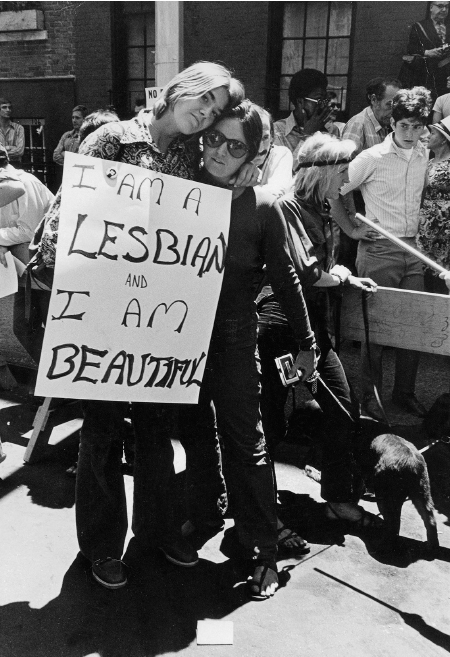America’s History: Printed Page 925
America: A Concise History: Printed Page 840
America’s History: Value Edition: Printed Page 818
Stonewall and Gay Liberation

The liberationist impulse transformed the gay rights movement as well. Homophile activists in the 1960s (see “The Homophile Movement” in Chapter 26) had pursued rights by protesting, but they adopted the respectable dress and behavior they knew straight society demanded. Meanwhile, the vast majority of gay men and lesbians remained “in the closet.” So many were closeted because homosexuality was considered immoral and was even illegal in the vast majority of states — sodomy statutes outlawed same-sex relations, and police used other morals laws to harass and arrest gay men and lesbians. In the late 1960s, however, inspired by the Black Power and women’s movements, gay activists increasingly demanded immediate and unconditional recognition of their rights. A gay newspaper in New York bore the title Come Out!
The new gay liberation found multiple expressions in major cities across the country, but a defining event occurred in New York’s Greenwich Village. Police had raided gay bars for decades, making arrests, publicizing the names of patrons, and harassing customers simply for being gay. When a local gay bar called the Stonewall Inn was raided by police in the summer of 1969, however, its patrons rioted for two days, burning the bar and battling with police in the narrow streets of the Village. Decades of police repression had taken their toll. Few commentators excused the violence, and the Stonewall riots were not repeated, but activists celebrated them as a symbolic demand for full citizenship. The gay liberation movement grew quickly after Stonewall. Local gay and lesbian organizations proliferated, and activists began pushing for nondiscrimination ordinances and consensual sex laws at the state level. By 1975, the National Gay Task Force and other national organizations lobbied Congress, served as media watchdogs, and advanced suits in the courts. Despite all the activity, progress was slow; in most arenas of American life, gays and lesbians did not enjoy the same legal protections and rights as other Americans.
EXPLAIN CONSEQUENCES
Question
How did the antiwar movement, women’s liberation, and gay liberation break with an earlier liberal politics?